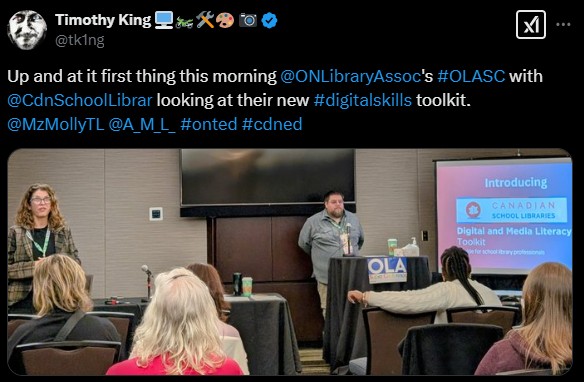Cylinder cover parts and diagram. Isn’t that fantastically complicated?
Hints at problems with sealing the new gasket? https://forum.concours.org/index.php?threads/valve-cover-gasket.53892/
Murph’s Kits parts: https://murphskits.com/c14-valve-adjustment-kit-1/ promises to provide all the bits you need (that the dealer parts counter guy won’t bother to tell you about):
Oil leaks become an issue unless you replace all the o-rings as well as including a new gasket? Might as well change the spark plugs and fuel filter while in there. Ends up being $338 (CAD) for all of it, plus another forty bucks in shipping – still much cheaper than parts from the local dealer and with helpful additions so I’m not left with a leaky mess. I’ve got Murph’s Kit bits all over the C14 and trust them. The set is ordered.
***
Good list of parts numbers for C14: https://zggtr.org/index.php?topic=1650.0
2010 C14 Service manual – 99924-1431-01
AIR FILTERS
Air Filter Element – 11013-0014
BMC Air Filter – 466/04
K&N Air Filter – KA-1406
Fuel
Fuel Pump filter/strainer/whatever 49019-0013. From a 2013 Kawasaki 750 side-by-side (not sure what they are calling it).
Fuel Pump O-ring – 670E5075
Fuel pump (fuel pump housing would need to be disassembled) http://www.fuelpumpfactory.com/Kawasaki-fuel-pump-Concours-14-s/6323.htm
WASHERS & Push Rivets
Final Drive Crush Washer – 92022-1086
Final Drive O-Ring for Filler Cap – 92025-1735
Oil Drain Plug Crush Washer – 92065-097
Water pump coolant drain crush washer – 92200-0498 Adept Power Sports
Fairing screw nylon washers:
5.3mm ID X 11.5mm OD X .5mm thick – 92200-0006
10.4mm ID X 19mm OD X .5mm thick – 92200-0157
Windshield mounting screw nylon washers:
10.3mm ID X 17mm OD X 1.0mm thick – 92200-0380
Nylon Push Rivet (two sizes) – 92039-0051 & 99039-0051
Push rivet under the windscreen – 92039-0048
Motosport.com Bolt Brand 6mm Nylon Push Rivet – 2005-6RIV (These may not work)
Balkamp part number 665-1446 (pkg of 9) available at NAPA for (rivet 92039-0051)
Hillman push-in Nylon Rivet – 1/4 inch H#881216 (Lowes) barcode 0823671607, for the top of dash
Grainger http://www.grainger.com/Grainger/Push-In-Rivet-5MUF8 (not sure if these fit)
Amazon http://www.amazon.com/Tusk-Kawasaki-Suzuki-Fender-Rivets/dp/B0039LEU0I (not sure if these fit)
MC OIL FILTERS Designed for the bike
Kawasaki 16097-0004
K&N KN-303
Mobil1 M1MC-134 (crosses to a K&N KN-303)
Hiflofiltro HF303/303C
Amsoil EaOM103
Emgo 10-82222
Fram PH6017A
Parts Unlimited 010035X
Oil Filters others use (other than OEM fitment – use at own risk)
A/C Delco – PF2135
Amsoil – 24942 (I think this is a Wix filter)
Napa Gold – 1358
Napa – PS1358 (black and costs less)
Purolator ML16817 (made for MC, not sure if it fits our bikes)
Purolator Pure One – PL14610 (Note: The Purolator website does not recommend using cage filters on MCs)
Purolator Pure One – 2.5″- PL14612 (Note: The Purolator website does not recommend using cage filters on MCs)
Wix – short: 51358; long: 51356
Champion 7317 (same as SuperTech)
Mobil 1 M1-110
BULBS
Tail License Plate Bulb – 92069-1055, 5007, R5W (5 watt)
Front/ Rear Turn Signal Bulbs – 92069-1125
Turn signal bulbs are 7507A bulbs (BAU15s base)
Headlight Bulb 12V-60/55W – 92069-1002 (standard H4)
Small headlight Bulb 12V/5W – 92069-1016
City lights are either a 2825 (5w) or a 2886 (6w)
City lights (LED, inverted cone, white) 194 or 168
Switches
SPST Waterproof Miniature Rocker Switch (On-Off) 16A Green 12V (also available in red) .921″ Long x .685″ Wide x .551″ Deep Part Number: NTE-54-204W $5.40 each https://shop.vetcosurplus.com/
TIRES/Wheels
Front Tire Size – 120/70ZR17
Rear Tire Size – 190/50ZR17
Front bearing seal (08/09) 92049-0050
Rear bearing seal (08/09) 92049-1061
Wheel Bearings (F) – 6005UU oem, or 6005 2RS1 or 6005 2RSH (SKF replacement numbers)
Wheel Bearings (R) – 6304UUC3 oem, or 6304 2RS1 or 6304 2RSH (SKF replacement) the “C3” designation is a standard for precision, SKF bearings are normally C3 unless specified otherwise…
Rear Wheel Bearing All Balls – 25-1353 (Comes with one seal – you need one kit – it has two bearings)
90 Degree retrofit valve stems for the original tire sensors: Honda part VALVE ASSY., RIM 42755-MCA-R31 2014 Goldwing
Steering
Steering Stem Bearings – All Balls Racing -Tapered roller bearing and seal kit for steering stem (steering head) C-14
Part No. 22-1039 Cost: $47.95 http://www.allballsracing.com/
BRAKE STUFF
Front pad Assembly – 43082-0071 (2 EA) (08-09)
Front pad Assembly – 43082-0112 (2 EA) (2010)
Rear pad Assembly – 43082-0055 (1 EA)
Rear brake pads – EBC FA254 (Kevlar) or FA254HH (Sintered)
Front brake pads – EBC FA417/4HH (Sintered)
Front pads – Ferodo FDB2220ST (mcstuff.com p/n 454-1071, requires two sets)
Rear pads – Ferodo FDB2111P (p/n 454-2682) (evidence is these don’t last as long or bite as well as other brands)
Carbone Lorraine – 1177SBK5 (front x 2), 2813RX rear
Front ABS brake line – Galfer SS FK003D625-3
Caliper rebuild kits – https://brakecrafters.com/product/caliper-seal-kit-bcnr0036/
Engine Parts
Spark Plugs – CR9EIA replaced by CR9EIA-9, gap .036 IRIDIUM!
Valve cover gasket – 11061-0263
Pulsing Cover gasket – 92055-0086
Oil pan drain bolt – 92066-0079
Oil pan drain bolt with magnet – MP-01, MP-11 for the rear drive https://ift.tt/rpxajLk
Manual Cam Chain Tensioner APE KTZx14
(NOTE: This replaces the self adjusting cam chain tensioner and eliminates the ‘startup rattle’. Downside is that you will have to keep an ear out on the adjustment. There is no track record on how long the adjustment holds. USE THIS AT YOUR OWN RISK! )
Replacement Exhaust Header Nuts – McMaster-Carr 93795A230 M8.0 Oval Locknut. Use with stainless steel washers.
Fuji-lok nuts for the Exhaust Header – Use with stainless washers
Note: the ’10 manual specs 13ft/lbs for torque. This should apply to the other manuals as well.
Oil filler cap – 16115-1009 (note: Fits the rear drive as well)
Tools
Oil filter wrench – 57001-1249
Pennzoil oil filter wrench 2″-3 3/4″ 51mm to 95mm
JIS +2 Driver (for the ‘flies) https://ift.tt/lAVxCWn
15mm drag link tool for rear drive filler plug http://search.harborfreight.com/cpisearch/web/search.do?keyword=drag+link
Stem nut socket from CycleDude
Steering stem top nut – 12mm hex 79.7ft lbs torque
Front wheel removal – 13/16″ spark plug socket, reversed
Rear Axle – 27mm socket for the large nut, 14mm hex wrench for the left side
Final Drive
Filler cap o-ring – 92055-049 (31mm)
Swing arm
OEM Left hand side torque arm bolt is 10x63mm with part number 92153B (used to be 92153A)
OEM Right hand side torque arm bolt is 10x67mm with part number 92153C (used to be 92153A)
The flanged lock nut part number is the same for both bolts 10mm diameter nut with part number 92210B
Electrical
Battery for FOBs – CR2025 3v (watch battery)
Battery for TPS – CR2032L/F1N http://www.digikey.com/product-search/en?x=0&y=0&lang=en&site=us&KeyWords=P668-ND
Other sources for TPS batteries https://octopart.com/cr-2032%2Fvcn-panasonic-19088802
Or P660-ND check both of them out on digikey’s site.
12V bike battery sources
Stock battery FTZ14-BS Furakawa – dealer sourced most likely (expensive)
AGM MBTX12U 14AH by MotoBatt (I have this and it’s working fine, no issues)
Shorai battery LFX21A6-BS12 Tender SHO-BMS01
Battery Stuff http://www.batterystuff.com/powersports-batteries/sYTX14-BS.html
Bodywork
Left side cowling parts 39156-031, 033, 034, 0371, 0395
Battery cover stud rubber grommet – Frame fittings, p/n 92075-1011, damper
Levers
Brake – ASV BRC511
Clutch – ASV BRC511
Key Blanks
Key Blank – ILCO KW14R Warning, this may only work for the 08 model locks and there appears to be two types of keys in use. The KW14R only works with one of them. If your key starts with an A it will be a “Silca KW14R” keyblank. If it starts with a B it will be an “Silca KW14” keyblank.
Works ok on the bags but you will need to not insert it the whole way for the seat as it doesn’t have the stop the Kawi key does. http://www.mysecuritypro.com/index.asp?PageAction=VIEWPROD&ProdID=663
Ron Ayers has new Oven Knob keys. A and B style key. If you look at your key in the fob it will have a number that starts with either A or B.
27008-0050 Style A
27008-0051 Style B
TPMS sensor part numbers
US bikes 315 Mhz (green). Note that EUR, AU, SEA use 434Mhz sensors (blue). MY (have no clue what MY stands for) sensors 315Mhz (red)
2008-2013 21176-0125
2014-2015 21176-0748































































































